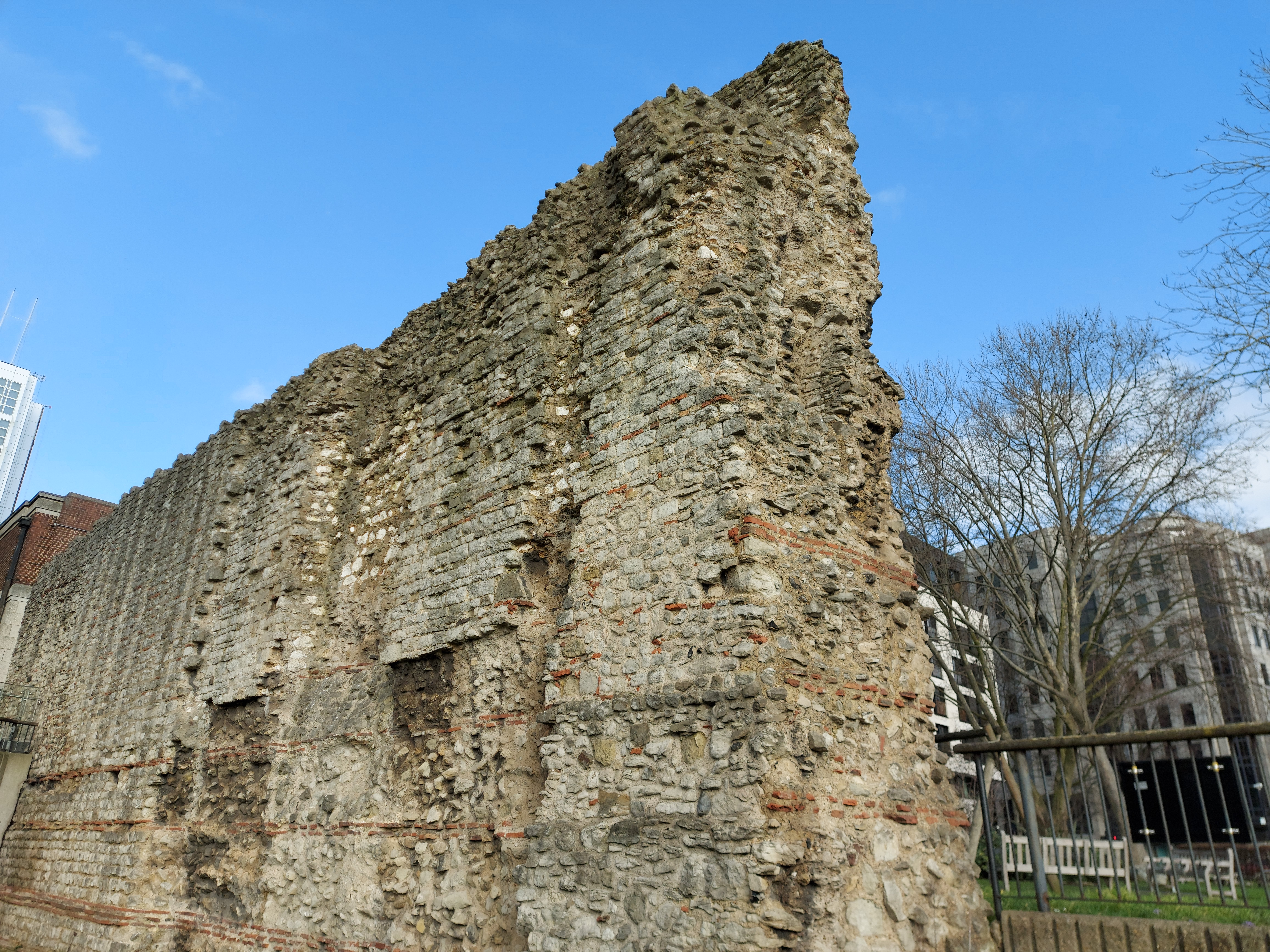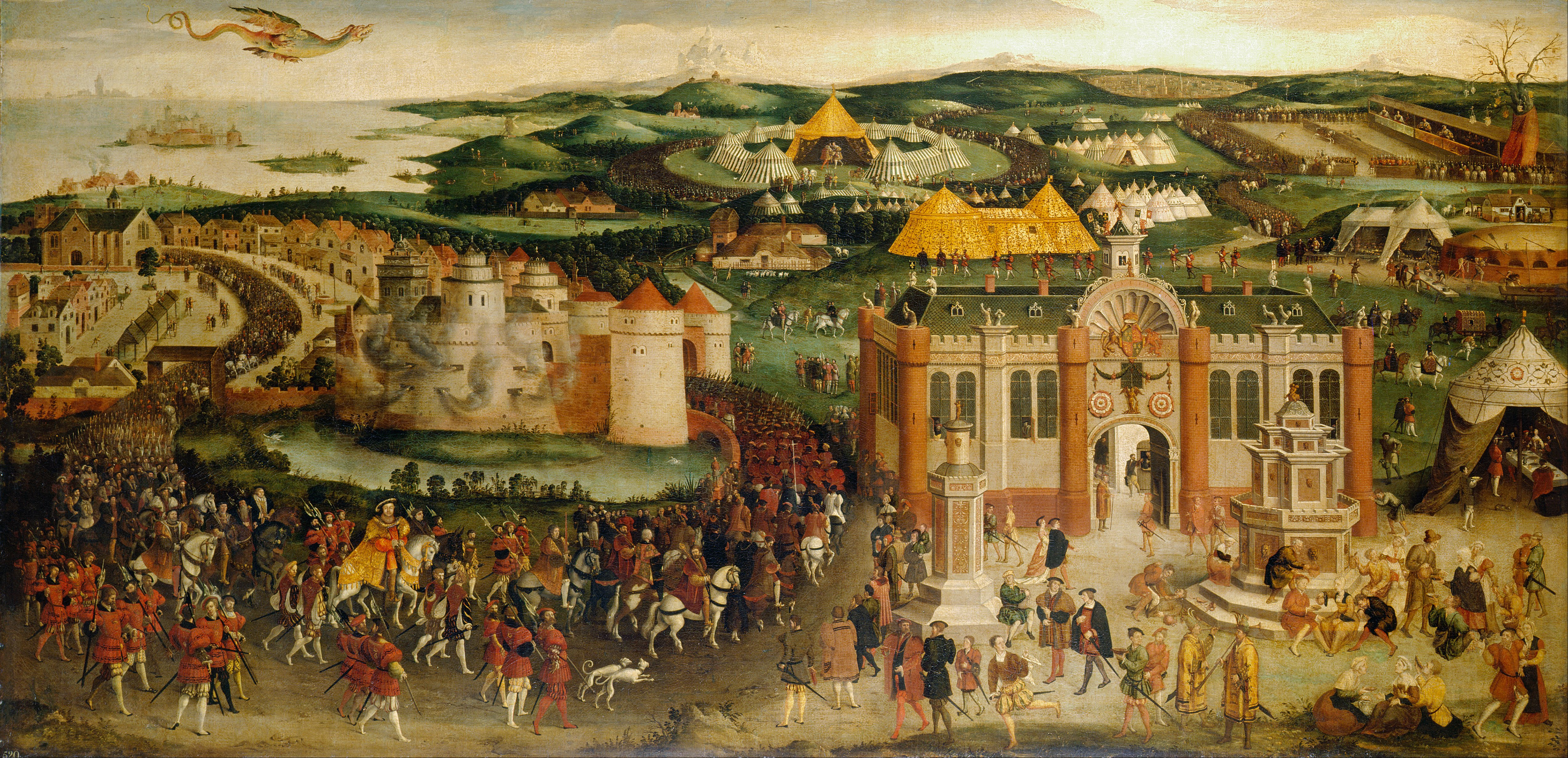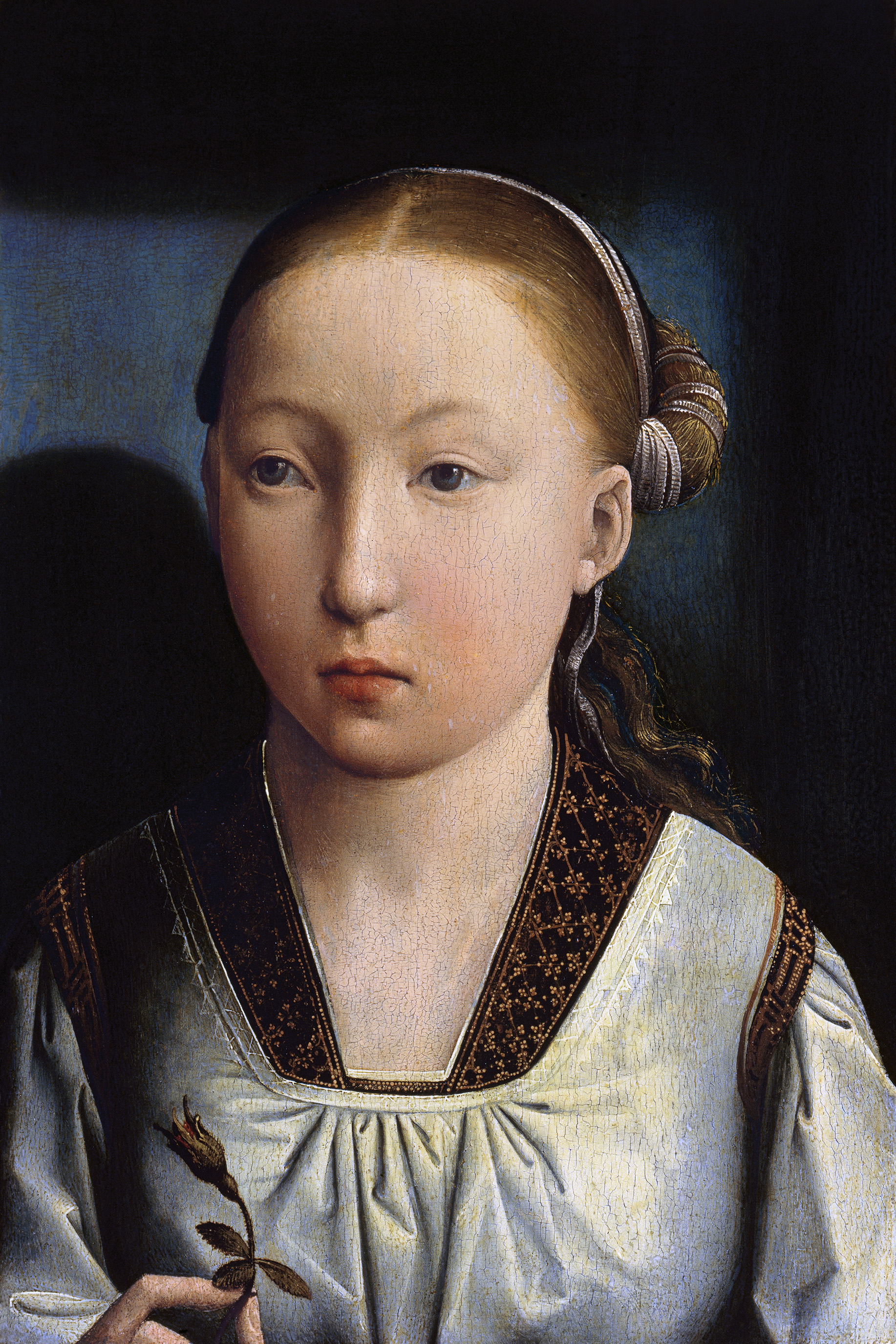|
Mary Scrope
Mary Scrope (died 25 August 1548) was an English courtier. She was the granddaughter of Henry Scrope, 4th Baron Scrope of Bolton, and the sister of Elizabeth Scrope (d. 1537), wife of John de Vere, 13th Earl of Oxford, and Margaret Scrope (d. 1515), wife of Edmund de la Pole, 3rd Duke of Suffolk. She is said to have been in the service at court of King Henry VIII's first four wives. As the wife of Sir William Kingston, Constable of the Tower of London, she was in attendance on Anne Boleyn during the Queen's brief imprisonment in the Tower in May 1536, and both she and her husband were among those who walked with the Queen to the scaffold. By her first husband, Edward Jerningham, she was the mother of Sir Henry Jerningham, whose support helped to place Queen Mary I on the throne of England in 1553, and who became one of Queen Mary's most favoured courtiers. Family Mary Scrope was one of the nine daughters of Richard Scrope (d. 1485) of Upsall, Yorkshire, the second son of Henry ... [...More Info...] [...Related Items...] OR: [Wikipedia] [Google] [Baidu] |
William Kingston
Sir William Kingston, KG ( – 14 September 1540) was an English courtier, soldier and administrator. He was the Constable of the Tower of London during much of the reign of Henry VIII. Among the notable prisoners he was responsible for was Queen Anne Boleyn, as well as the men accused of adultery with her. He was MP for Gloucestershire in 1529 and 1539. Life He was of a Gloucestershire family, settled at Painswick. William appears to have been a yeoman of the guard before June 1509. In 1512 he was an under-marshal in the army; went to the Spanish coast; was with Dr. William Knight in October of that year at San Sebastián, and discussed with him the course to be pursued with the disheartened English forces who had come to Spain under Thomas Grey, 2nd Marquess of Dorset. He fought at the battle of Flodden, was knighted in 1513, became sewer to the king, and later (1521) was a carver. He was appointed High Sheriff of Gloucestershire for 1514–15. He seems to have been wit ... [...More Info...] [...Related Items...] OR: [Wikipedia] [Google] [Baidu] |
Tower Hill
Tower Hill is the area surrounding the Tower of London in the London Borough of Tower Hamlets. It is infamous for the public execution of high status prisoners from the late 14th to the mid 18th century. The execution site on the higher ground north-west of the Tower of London moat is now occupied by Trinity Square Gardens. Tower Hill rises from the north bank of the River Thames to reach a maximum height of 14.5 metres (48 ft) Ordnance Datum. The land was historically part of the Liberties of the Tower of London, an area the Tower authorities controlled to keep clear of any development which would reduce the defensibility of the Tower. Building has encroached to a degree, but a legacy of this control is that much of the hill is still open. The hill includes land on either side of the London Wall, a large remnant of which is visible. Definition Generally speaking, the name Tower Hill informally applies to those parts of the Liberties of the Tower of London, Towe ... [...More Info...] [...Related Items...] OR: [Wikipedia] [Google] [Baidu] |
Elizabeth Stoner
Elizabeth Chamber, better known as Elizabeth Stonor (died after 8 December 1602), was an English courtier. She is remembered as the wife of Sir Walter Stonor, and was one of the women chosen to serve Anne Boleyn, the King's second wife, during her imprisonment in 1536. Life She was the daughter of Geoffrey Chamber of Stanmore, Middlesex and married successively, Sir Walter Stonor, Reginald Conyers, Edward Griffin and Oliver St John, 1st Baron St John of Bletso. She was a lady-in-waiting to each of Henry VIII of England's six wives, and was the '' Mother of the Maids'', with responsibility for the conduct of the young maids of honour. In May 1536, five women were appointed to serve Anne Boleyn while she was imprisoned in the Tower and to report to Sir William Kingston, the Lieutenant of the Tower, and through him to the King's chief minister, Thomas Cromwell, all that the Queen said. These women included Elizabeth Stonor; Anne Boleyn's aunt, Anne Boleyn, Lady Shelton; E ... [...More Info...] [...Related Items...] OR: [Wikipedia] [Google] [Baidu] |
Master Of The Horse
Master of the Horse is an official position in several European nations. It was more common when most countries in Europe were monarchies, and is of varying prominence today. (ancient Rome) The original Master of the Horse () in the Roman Republic was an office appointed and dismissed by the Roman Dictator, and expired with the Dictator's own office, typically a term of six months in the early and mid-republic. The served as the Dictator's main lieutenant. The Dictator nominated the , unless a specified, as was sometimes the case, the appointee. The Dictator could not rule without a to assist him, and, consequently, if the first either died or was dismissed during the Dictator's term, another had to be nominated in his stead. The was granted a form of , but at the same level as a , and thus was subject to the of the Dictator and his powers were not superior to those of a Consul. In the Dictator's absence, the became his representative, and exercised the same powers as t ... [...More Info...] [...Related Items...] OR: [Wikipedia] [Google] [Baidu] |
Margaret Dymoke
Margaret Dymoke (born ) was a lady-in-waiting at the court of Henry VIII of England. Her married names were Vernon, Coffin and Manners. She was born around 1500 in Scrivelsby, Lincolnshire, the daughter of Sir Robert Dymoke of Scrivelsby and Jane Cressner. Her first husband was Richard Vernon of Haddon (d. 1517), by whom she had at least two children. Her second husband was Sir William Coffin (courtier), William Coffin, Master of the Horse to Anne Boleyn, the Wives of Henry VIII, second wife of Henry VIII. In 1536 five women were appointed to serve Queen Anne while she was imprisoned in the Tower of London, Tower and to report to William Kingston, Sir William Kingston, the Lieutenant of the Tower of London, Lieutenant of the Tower, and through him to the King's chief minister, Thomas Cromwell, all that the Queen said. These women included Margaret; Queen Anne's aunt, Anne Shelton (courtier), Lady Anne Shelton; Mary Scrope, Lady Mary Kingston, the wife of Sir William Kingston, t ... [...More Info...] [...Related Items...] OR: [Wikipedia] [Google] [Baidu] |
Elizabeth Boleyn, Lady Boleyn
Elizabeth, Lady Boleyn (; ) was a lady-in-waiting at the court of Henry VIII of England. Through her marriage to Sir James Boleyn, she was the aunt of Henry VIII's second wife, Anne Boleyn. The two were not close, and Elizabeth Boleyn acted as her niece's gaoler when Queen Anne was arrested on charges of adultery, incest and conspiracy to kill the King. Family background Her father was Roger Wood or Roger a Woode. The Wood family estates included East Barsham and Terrington in Norfolk. Elizabeth's sister (or aunt), Anne Wood, married Thomas Astley (died 1543) of Melton Constable. Her son, John Astley (died 1596) was Master of the Jewel Office. Anne Astley died at Blickling Hall in 1512. Elizabeth's sister, Alice Wood, married Michael Makerith or Makerel, an embroiderer, and Dorothy Wood married a William Whayte. Roger Wood, by his will of 1518, bequeathed his estates to his brother-in-law William Fermor and his father Henry Fermor, who built East Barsham Manor. Career at co ... [...More Info...] [...Related Items...] OR: [Wikipedia] [Google] [Baidu] |
Anne Shelton (courtier)
Anne, Lady Shelton ( Boleyn; 1483 – 8 January 1556) was a sister of Thomas Boleyn, 1st Earl of Wiltshire, and one of the aunts of his daughter, Queen Anne Boleyn, the second wife of King Henry VIII. Life Anne Boleyn was born at Blickling, Norfolk, the daughter of William Boleyn and Margaret Butler, daughter of Thomas Butler, 7th Earl of Ormond and granddaughter of Joan de Beauchamp. She married John Shelton before 1503. In 1533, Lady Shelton and her sister, Lady Alice Clere, were placed in charge of the household of the King's daughter, Mary. There is some evidence that Lady Shelton was harsh towards the young Mary, often taunting her with Elizabeth's higher status, but it is widely believed that she never resorted to actually hitting the young girl to chastise her. She received letters from Queen Anne criticising Mary. By July 1536 John Shelton was comptroller of the household established for Mary and Queen Anne Boleyn's daughter, Princess Elizabeth. In the same ... [...More Info...] [...Related Items...] OR: [Wikipedia] [Google] [Baidu] |
Thomas Cromwell
Thomas Cromwell (; – 28 July 1540) was an English statesman and lawyer who served as List of English chief ministers, chief minister to King Henry VIII from 1534 to 1540, when he was beheaded on orders of the king, who later blamed false charges for the execution. Cromwell was one of the most powerful proponents of the English Reformation. As the king's chief secretary, he instituted new administrative procedures that transformed the workings of government. He helped to engineer an annulment of the King's marriage to Catherine of Aragon so that Henry could lawfully marry Anne Boleyn. Henry failed to obtain the approval of Pope Clement VII for the annulment in 1533, so Parliament endorsed the king's claim to be Supreme Head of the Church of England, giving him the authority to annul his own marriage. Cromwell subsequently charted an Lutheranism, evangelical and reformist course for the Church of England from the unique posts of Vicegerent in Spirituals and Vicar-general (the t ... [...More Info...] [...Related Items...] OR: [Wikipedia] [Google] [Baidu] |
Field Of The Cloth Of Gold
The Field of the Cloth of Gold (, ) was a summit meeting between King Henry VIII of England and King Francis I of France from 7 to 24 June 1520. Held at Balinghem, between Ardres in France and Guînes in the English Pale of Calais, it was an opulent display of wealth by both kings. The summit was arranged to increase the bond of friendship between the two kings following the Anglo-French treaty of 1514. The two monarchs would meet again in 1532 to arrange Francis's assistance in pressuring Pope Clement VII to pronounce Henry's first marriage as illegitimate. Under the guidance of English Cardinal Thomas Wolsey, these European states sought to outlaw war forever among Christian peoples. The Pale of Calais, home to the meeting in Balinghem, was the final English possession in France. This territorial leftover from the Hundred Years' War caused some tensions between the English and French, as the latter preferred a location closer to the border, but topographical considerati ... [...More Info...] [...Related Items...] OR: [Wikipedia] [Google] [Baidu] |
Maria Hayward
Maria Hayward is an English historian of costume and early modern Britain. She is Professor of Early Modern History at the University of Southampton and has published a number of works on the courts of Tudor and Stuart monarchs. Academic career Hayward earned a bachelor's degree in history before completing a postgraduate diploma in textile conservation at Hampton Court Palace's Textile Conservation Centre, housed in the Winchester School of Art. She then moved into work as a conservator before completing a PhD at the London School of Economics in 1997. In 1999 she began working at the Textile Conservation Centre, serving as its head of studies and research from 2000 to 2008, and in 2008 joined the University of Southampton. She has served as the head of the history department at the university since 2022. Hayward served on the editorial board of the journal '' Studies in Conservation'' from 2004 to 2009 and as assistant editor of ''Costume'' from 1999 to 2008. She has also se ... [...More Info...] [...Related Items...] OR: [Wikipedia] [Google] [Baidu] |
Katherine Of Aragon
Catherine of Aragon (also spelt as Katherine, historical Spanish: , now: ; 16 December 1485 – 7 January 1536) was Queen of England as the first wife of King Henry VIII from their marriage on 11 June 1509 until its annulment on 23 May 1533. She was Princess of Wales while married to Henry's elder brother, Arthur, Prince of Wales, for a short period before his death. Catherine was born at the Archbishop's Palace of Alcalá de Henares, and was the youngest child of Isabella I of Castile and Ferdinand II of Aragon. She was three years old when she was betrothed to Arthur, the eldest son of Henry VII of England. They married in 1501, but Arthur died five months later. Catherine spent years in limbo, and during this time, she held the position of ambassador of the Aragonese crown to England in 1507, the first known female ambassador in European history. She married Henry VIII shortly after his accession in 1509. For six months in 1513, she served as regent of England wh ... [...More Info...] [...Related Items...] OR: [Wikipedia] [Google] [Baidu] |
Henry VII Of England
Henry VII (28 January 1457 – 21 April 1509), also known as Henry Tudor, was King of England and Lord of Ireland from his seizure of the crown on 22 August 1485 until his death in 1509. He was the first monarch of the House of Tudor. Henry was the son of Edmund Tudor, 1st Earl of Richmond, and Lady Margaret Beaufort. His mother was a great-granddaughter of John of Gaunt, an English prince who founded the Lancastrian cadet branch of the House of Plantagenet. His father was the half-brother of the Lancastrian king Henry VI. Edmund Tudor died three months before his son was born, and Henry was raised by his uncle Jasper Tudor, a Lancastrian, and William Herbert, a supporter of the Yorkist branch of the House of Plantagenet. During Henry's early years, his uncles and the Lancastrians fought a series of civil wars against the Yorkist claimant, Edward IV. After Edward retook the throne in 1471, Henry spent 14 years in exile in Brittany. He attained the throne when his f ... [...More Info...] [...Related Items...] OR: [Wikipedia] [Google] [Baidu] |




